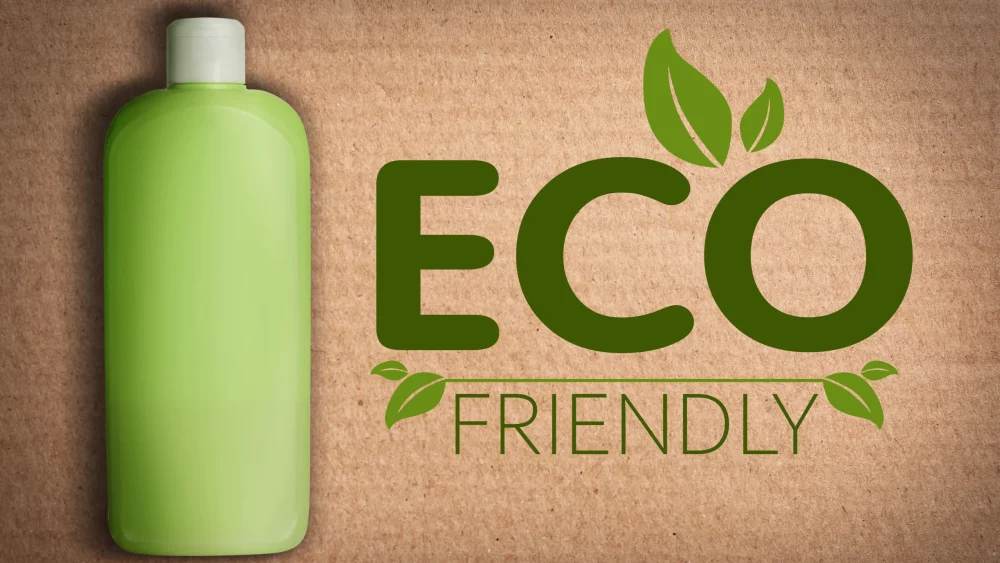We’ve all been there: you’re scrolling through Facebook and you see a viral post about a “miracle” skincare product. It’s organic! All-natural! Sulfate free! You just know that this is the answer to all of your skincare woes.
Products that tout themselves as “natural” or “organic” may not be as environmentally friendly as you think. In some cases, these products contain just a small amount of organic ingredients, while the majority of the product is composed of synthetic chemicals. This marketing tactic is called greenwashing.
There’s a lot of talk in the skincare world about greenwashing. What is it? How do you know if a product is truly “green?” And should you care? Here’s everything you need to know about greenwashing in the beauty world.
What Is Greenwashing?
At its simplest, greenwashing is when businesses or organizations make false or misleading claims about their sustainability practices. This can be anything from claiming a product is “organic” and “eco-friendly” when it’s actually made with harmful chemicals, to using packaging with the color green to make a product look environmentally friendly when it isn’t.
Unfortunately, greenwashing is rampant in today’s marketplace. Companies use greenwashing as a way to improve their image and appeal to consumers who are concerned about the environment. But greenwashing is only empty rhetoric.
So how can you avoid being fooled by greenwashing? Keep reading!

Why Is Greenwashing Unethical and Why Does It Continue?
Greenwashing has been an issue for as long as companies have been trying to appear
environmentally friendly. And it’s not hard to see why. After all, who doesn’t want to feel good about buying products that are marketed as being good for the planet? Companies make grandiose claims about their environmental credentials, but when you look at their actions, it’s clear that they’re not really committed to making change.
This is why the issue of greenwashing has yet to be solved. As long as there are companies out there who are more interested in profit than the environment, greenwashing will remain a
persistent problem.
Greenwashing: “What Can I Do?”
Until products are regulated more strictly, you can take matters into your own hands and figure it out yourself.
Greenwashing is a serious problem, but there are things you can do to combat it. For starters, you can arm yourself with knowledge on greenwashing and how to spot it. We’re fortunately in the era of social media and the internet, so there’s never been a better opportunity to find the information you need.

Here are ways you can combat greenwashing:
Be Skeptical and Do Your Research
Don’t take a company’s green claims at face value. Research their practices and see if they match up with what they’re saying.
Research the products you’re interested in, and look for third-party certifications that verify a company’s green claims. Check ingredient lists for any potentially harmful ingredients. Phthalates, parabens, and sulfates are all common chemical irritants that can be found in many skincare products.
Also, greenwashed products often come with a higher price tag, so be sure to do your research before spending your hard-earned money on something that might not be as green as you think.
Look for Vague or Unsubstantiated Claims
Vague claims are a red flag for greenwashing. If a company can’t back up their claims with specific data or examples, be suspicious.
Remember – companies are in business to make money, not to save the planet. If a claim seems too good to be true, it probably is. Be skeptical of claims that are unsupported by concrete evidence.
Lack of Transparency and Counterfeit Labels
A truly green company should be open and transparent about its environmental practices. If a company is vague about its green credentials, it could be greenwashing.
Be on the lookout for fake certifications and labels. Some companies create their own labels in
an attempt to mislead consumers.
Call Out Greenwashing!
When you see an example of greenwashing call it out!
You can do this publicly, like by leaving a negative review or posting on social media. You can also raise awareness by talking to your friends and family about greenwashing and telling them what to look out for.
Finally, support businesses that are actually environmentally responsible. Showing your support will encourage other companies to clean up their act.
Let’s Get Rid of Greenwashing Together
 When it comes to fighting against greenwashing, we need to be more informed consumers and demand better from businesses. There are a lot of ways to combat greenwashing- from calling out companies when you see their false claims, to supporting organizations that are fighting for transparency in the marketplace.
When it comes to fighting against greenwashing, we need to be more informed consumers and demand better from businesses. There are a lot of ways to combat greenwashing- from calling out companies when you see their false claims, to supporting organizations that are fighting for transparency in the marketplace.
Are there any products in your home that are greenwashed? Take a look and see if you can make some swaps. Let’s start demanding better from businesses and they will eventually have to give us something worth buying.
So don’t be discouraged – together, we can combat greenwashing!





Comments are closed.